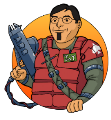You need an airbrush cleaning station (just search iwata airbrush cleaning station in amazon); it will make your life much better.
In addition, to properly clean your airbrushes, you need something to scrub the inside of them. This means either generic small pipe cleaners, the airbrush-specific pipecleaners, or (my favorite) the dental floss things with bristles that look like pipe cleaners.
You also want a wash bottle. It looks like a water bottle with a bent or hooked straw on top; squeeze the bottle, and water comes out. This is very helpful for cleaning gravity fed airbrushes.
Vallejo Airbrush Cleaner is really good. Iwata's is a lot cheaper, but not as effective. Isopropyl will also work, but takes a little more effort.
If this is your first airbrush, buy a 0.3mm or larger, not a 0.2mm. VMA and VGA are designed to work unthinned in an airbrush of at least 0.3mm; if it's smaller, you will need to thin it. If you want to use other brands of paint (with even with thinner) without too much trouble, larger needle size is better. Iwata 0.35mm (
HP-
CS) is a standout for this task.
In addition, 0.2mm is not ideal for tasks like priming and basecoating, or painting terrain. And, even when everything is right, 0.2mm and smaller means you must constantly clear the tip.
What 0.2mm is really good for is fine details, and painting things like edges where you can't get the needle right to the surface. However, remember that a mask is a mask, and 0.2 won't do any better than 0.5 if you have the area masked off (yeah, the aeresolization of the paint will be different, which leads to different possibilities, but this is beyond the topic of "first airbrush").
 Dullspork wrote:
Dullspork wrote:
Cleaning your airbrush is the single most important skill to learn when getting your first airbrush. If you don't know how to do this well then you're going to have lots of frustration until you do.
Truer words have never been spoken. If you get paint stuck in your airbrush, the experience will be anything but fun until you clean it out. The longer it's jammed in there, the harder it is to clean it out.
My tips for first time airbrushers:
1. Learn to clean your airbrush properly after every single use.
2. Don't use too much air pressure.
3. Resist the urge to pull the trigger all the way back. You only need to pull the trigger a tiny, tiny bit, really, the minimal amount possible to release some paint.
Finally, an airbrush is not like a paintbrush, in that it's intuitive and you just get more precise by blindly painting more stuff. You really need to do the practice drills, like the ones in the Paasche "getting started" book until you are comfortable with the basics, like making dots, drawing lines, and connecting two points. This is because when you're painting on a non-flat surface, it's not really easy to immediately see your mistakes, and the result is blobs of paint pooled into crevices, or an inability to just paint a small area without spending 5x more time masking than it would take to just pull out a paintbrush.